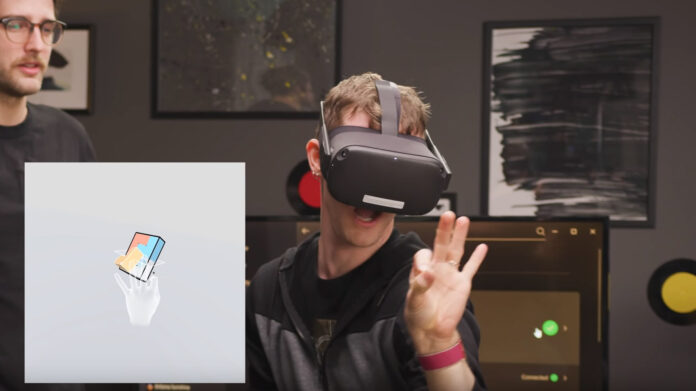The gaming industry which was estimated to be worth USD 198.40 billion in the year 2021, is expected to reach a massive 339.95 billion USD by 2027, growing 8.94% from 2022 to 2027. Meanwhile, as per the research firm IDC, the sales of VR headsets would exceed 20 million units in 2023, with the average selling price hitting its peak.
The emerging trends in the VR gaming industry, steered by tech giants like Meta, Microsoft, and Apple, are sure to disrupt the current gaming experience positively. And the VR gaming sector is already on an uphill ride to become one of the most profitable business categories in this decade.
Here’s a quick glimpse into the mass appeal of VR games and how you should level up to make your game development click in an intensely competitive market.
VR Gaming: A Brief Overview
VR gaming gives players an immersive experience with a first-person perspective of game action using virtual reality technology. Unlike its predecessor – the first gen computer games – VR games make the players experience and also influence the environment they are playing in using a variety of VR gaming accessories and devices that comprises VR headsets, hand controllers, sensor-equipped gloves, etc.
The immersive virtual experience along with its versatility on standalone systems, high-end advanced laptops, and PCs or specialized game consoles, make VR gaming immensely popular with the masses.
The sub-categories of VR games also use augmented reality (AR) and mixed reality (MR), in which virtual elements are brought into the player’s real-world using a headset or camera. There also are VR games that challenge players to move objects, get into a quest, solve problems or explore places in virtual environments.
Here’s a handful from our list of the top virtual reality experiences that are popular with the gaming crowd.
A Few Popular Games from the Top VR Gaming Experiences:
- Astro Bot: Rescue Mission
Developed by Japan Studio’s Team Asobi in 2018, and published by Sony Interactive Entertainment, the platform video game wraps the player in a virtual cocoon and uses size to surprise and excite with its innovative design.
The goal of the player is to rescue the Astro crew scattered around the different worlds, with 213 bots to rescue, twenty levels and five worlds.
- Batman: Arkham VR
Batman: Arkham VR is the follow-up to Arkham Knight that almost no one saw coming, even if the business has ended on traditional platforms.
The adventure virtual reality game developed by Rocksteady Studios and published by Warner Bros takes after the popular DC comics series Batman. One of the early versions to use VR headsets, Batman: Arkham provides a Batman- experience to the players from the superhero’s perception.
- Beat Saber
Beat Saber is a cross between Dance Revolution and Star Wars. In this musical rhythm game, participants wield luminous sabers and slash at the beat of the music. Players must navigate through a maze of colorful blocks and obstacles while keeping the beat.
- Elite Dangerous VR
Elite Dangerous is one of the pioneers who offered full VR support with an amazing immersive experience in an all-encompassing universe. It was once the favorite pick for many VR headset demos before the devices hit the market.
- I Expect You to Die 2
This game puts you in the role of a real-life international secret agent on a campaign to bring down a criminal organization, complete with all the traps and challenges you’d expect from a James Bond game.
The game’s traps will remind you more of Austin Powers than James Bond. But even if you are unsuccessful, you’ll still discover plenty of laughs.
- Catan VR
Many consider Settlers of Catan to be the pinnacle of board games. This virtual reality adaptation does a fantastic job of recreating the sense of playing a board game at a table, right down to the popping of avatars about the virtual board during online play. With its mobile headset and simpler controls, Oculus Go is an excellent choice for experiencing this.
Top 7 Steps to Stay Afloat and Succeed in VR Game Development
- Craft a Fresh and Engaging Idea
An initial step in developing a product is developing a viable concept to build on. Everything from the game’s plot to its intended players will go into the creative process. Keep your audience interested with a compelling plot.
Before building on your idea, it is important to identify the below factors:
- Your target audience or player
- The type of user experience that you intend for your players
- The emotions that your game must inspire in your players
- And, last but not the least, THE NEED FOR OR THE ROLE OF VR IN YOUR GAME?
Addressing these factors will help you come up with a well-framed concept that stays true to your game idea and target audience.
- Innovate with Design and Graphics
Virtual Reality game development is all about innovative designs that guarantee an exemplary immersive experience for the player.
The cost of your VR game also depends on the design of the game. You can choose from various game categories like 2D or 3D graphics, photorealistic graphics and 360 panoramic videos. Once you decide upon your category, you can create your own VR content or seek expert help if you are looking for a professional gaming experience that needs to be developed within a swift and meticulous framework.
- Select a Suitable Development Platform
Though HTC Vive continues to rule the roost as the most voted platform for gaming, Oculus Rift also enjoys good fandom among developers.
The HTC Vive headset, backed by its external tracking sensors, ensures a fully-immersive VR experience while Oculus Rift, owned by Meta/Facebook, and being a pioneer in the market, continues to be the choicest high-tech virtual reality gaming platform.
Sony’s PlayStation VR also offers a smooth and easy VR experience. Google Daydream View is well-suited for mobiles as the headset functions as a display for apps and games that can be downloaded from the Play Store. Samsung Gear VR headset is a good choice if you are not going for high-end VR experiences. While the library of apps and games is good, Samsung Gear VR doesn’t work on all phones.
- Choose the Right VR Devices
The user experience for your game depends on a design and development process that wisely addresses the flairs and flaws of available technology.
Choosing the wrong HMD (head-mounted device) could end up in issues like poor user experience, limited graphics, difficult distribution of apps, etc. You may always seek expert advice and guidance in selecting from lightweight mobile VR options like Google Cardboard to high-end options like the Gear VR and Daydream.
There are VR headsets for personal computers like the Oculus Rift, HTC Vive, and Windows Mixed Reality; Standalone solutions like the Oculus Go and Oculus Quest; and console VR options like the Sony PlayStation VR to choose from.
- Go for the Right Game Engine
There are a plethora of game engines for VR game development, Unity and Unreal being the most popular. With Unity, there is the advantage of supporting both 2D and 3D graphics as well as programming languages like C#, Boo or UnityScript. Plus, Unity is versatile with console, desktop, mobile and web platforms.
Also, Unity claims the record for the most number of games developed for mobile platforms. With an abundance of plugins and tools, the program supports an extensive range of asset formats and hence enjoys the adoration of a large community of loyal developers!
Though Unity does not have an open-source code, if you are keen on creating functional games in a quick and hassle-free way, then Unity is for you!
With Unreal Engine VR game development software, you have the advantage of creating console-based games. Unlike Unity, Unreal provides access to its source code and supports complex, 3D graphics-heavy projects.
- Find a Compatible Development Partner
Another crucial choice is assembling the best possible development team to work on your project. Creating a virtual reality game presents its own set of unique difficulties. An experienced team of developers who are well-versed with the challenges and nuances of creating a versatile VR game is essential to save you both time and money.
Seasoned players in game development will be able to understand your requirements and also throw better light into areas that you haven’t thought of or addressed. Leveraging past experiences with diverse platforms, game engines and gaming categories, an experienced team can keep your project error-free and productive.
- Publishing Your Game
The final stage in developing a successful game is releasing it on a platform where gamers can readily find it. Fortunately, nowadays, it’s not hard to choose a suitable online marketing platform. Your game has the best chance of getting discovered by a greater audience on two popular app stores namely: the Apple App Store and Google Play. Other major VR game distribution platforms include Oculus Store, Steam, Viveport, Weaver, etc.
Conclusion
Keep up with the ever-changing VR market with the help of knowledgeable VR Game Developers like Juego Studio who are familiar with emerging tendencies.
Indie games, the Louisville Cardinals, Tomb Raider, Diablo, Sia, Retro gaming, Lauv, Bazzi, Katie Nolan, Granblue Fantasy, Deontay Wilder, Dragon Quest, etc are a few names in Juego Studio’s versatile palette as one of the leading game development companies. Get in touch with Juego Studios to streamline your game development requirements and bring your game concepts alive and running!































